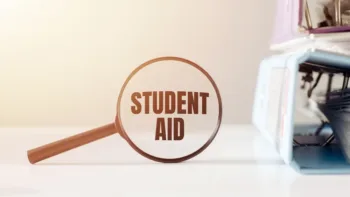
You’ve probably wondered what happens next if you’re in an income-driven repayment (IDR) plan for your federal student loans. Borrowers are normally required to recertify their income and family size each year to keep monthly payments accurate—and affordable. However, the process has been frozen for the past several weeks, leaving many unsure if their payments will suddenly increase.
Now, there’s some relief. Federal Student Aid has announced that recertification deadlines for affected plans will be pushed back to at least February 2026. While this doesn’t resolve all issues tied to the current pause, it helps many borrowers avoid immediate financial strain.
What is Income-Driven Repayment Recertification?
Income-driven repayment (IDR) plans are designed to keep federal student loan payments manageable by basing them on your income and family size. Each year, borrowers in these plans must “recertify” that information to ensure their payments remain accurate.
If you miss your recertification deadline, your monthly payments can increase—sometimes dramatically. Interest may also be capitalized, adding unpaid interest to your loan balance. That’s why these yearly updates are so important.
The recertification extension affects several major IDR plans: Income-Based Repayment (IBR), Pay As You Earn (PAYE), Income-Contingent Repayment (ICR), and the SAVE Plan.
The Delays in Recertification
On March 20, Federal Student Aid issued new guidance confirming that borrowers in IBR, PAYE, and ICR plans will not need to recertify their income or family size until at least February 2026. Borrowers in the SAVE plan had already seen their deadlines pushed back due to ongoing litigation. This announcement now extends similar protections to those in other IDR plans.
The update also clarifies that no action is required from borrowers. Recertification dates will be adjusted automatically, though it may take several weeks for loan servicers to reflect the change.
As Forbes noted, “This is a big win, as some had already reported seeing their monthly loan payments rise significantly.”
This move offers immediate relief for many who feared unaffordable payments while caught in the system-wide processing pause.
Limitations of This Update
While the recertification extension is welcome news for borrowers already in IDR plans, it doesn’t solve everything. The biggest limitation? New applications for IDR are still paused. Borrowers who were hoping to switch into an income-driven plan—or who recently applied—remain in limbo.
Federal Student Aid has confirmed that IDR applications cannot be submitted or processed at this time. If you submitted your application before the pause began, your account may be placed in administrative forbearance, which temporarily suspends payments but doesn’t advance you in programs like Public Service Loan Forgiveness (PSLF).
As Forbes explained, “This is frustrating for borrowers who were looking to change repayment plans to potentially start accruing eligible payments for programs like Public Service Loan Forgiveness.”
What You Should Do Now
Even though no immediate action is required, staying on top of your loan information is still important. Log in to your loan servicer’s website to check your current repayment plan, upcoming due dates, and recertification schedule. If your recertification date hasn’t been updated yet, don’t worry—systems may take a few weeks to reflect the extension.
Make sure your contact details—email and mailing address—are up to date so you don’t miss any future updates. You might also set a calendar reminder for early 2026 to check back in.
If you’re not currently enrolled in an IDR plan but had hoped to be, switching to a standard or graduated plan is still an option but may not lower your payments significantly. For now, patience and regular account monitoring are key.



